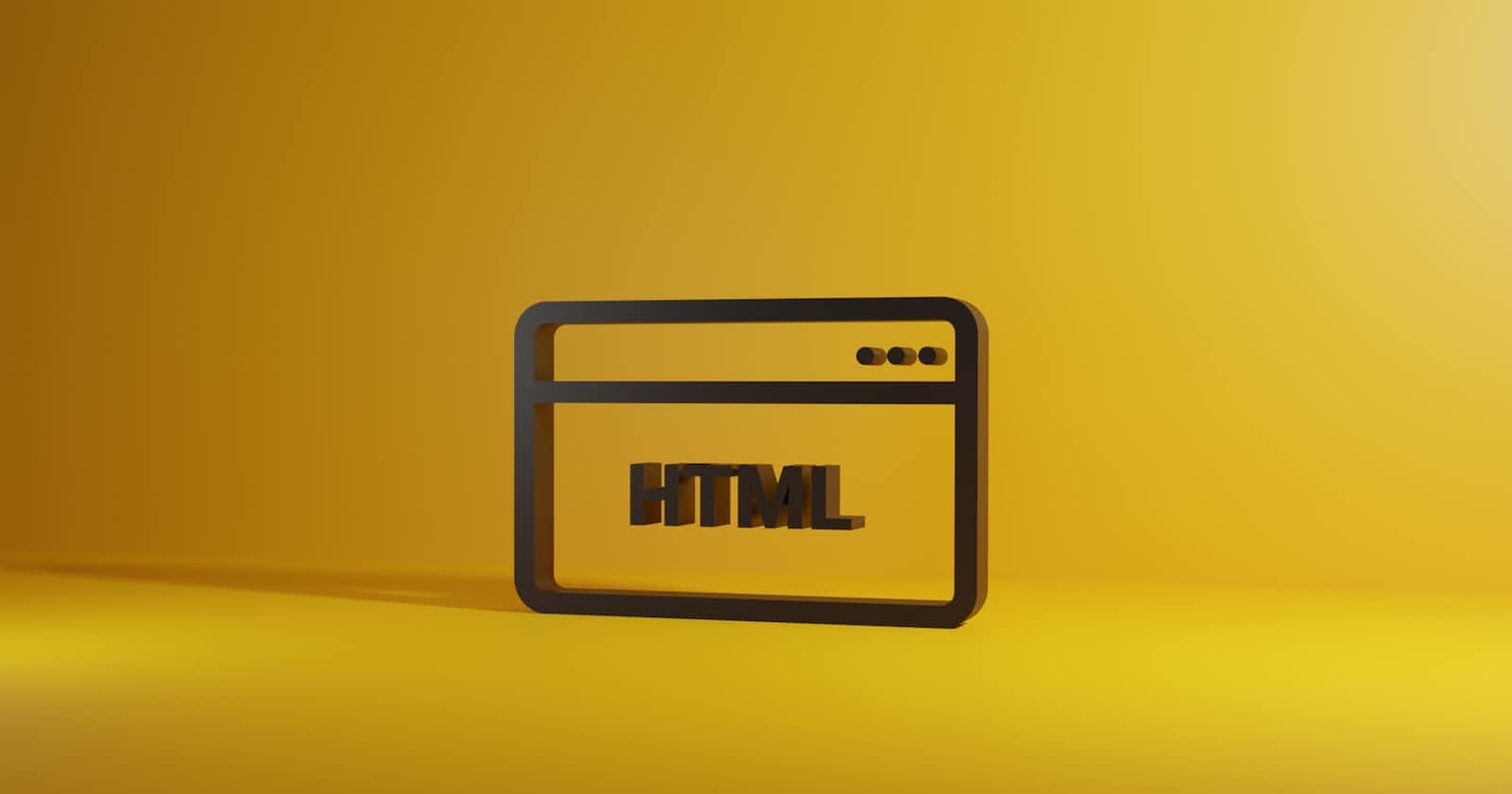Understanding HTML Semantics: The Key to Creating Meaningful and Accessible Web Content
What Is HTML Semantics?
HTML semantics refers to the use of HTML tags to provide meaning and structure to web content. When used correctly, these tags help search engines understand the content of a webpage, and they also help users with disabilities access and navigate the page. In this article, we'll delve into the importance of HTML semantics and how to use them effectively in your web development projects. You'll learn about the different types of HTML tags and how to use them to create well-structured and meaningful web content. By the end of this article, you'll have a solid understanding of HTML semantics and how to use them to create accessible and SEO-friendly websites.
Why Use HTML Semantics?
Improved accessibility: Semantic HTML helps screen readers and other assistive technologies understand the content of a webpage more easily, making it more accessible to people with disabilities.
Better SEO: Search engines use the structure and content of a webpage to understand its relevance and rank it in search results. Using semantic HTML can help search engines understand the content of a webpage more easily and improve its ranking.
Improved readability and maintainability: Semantic HTML makes it easier for humans to read and understand the content and structure of a webpage. It also makes it easier for developers to maintain and update the webpage, as the HTML code is more organized and clearly labeled.
Better user experience: Semantic HTML can help improve the overall user experience by making it easier for users to understand the content and structure of a webpage, and by making it easier for assistive technologies to interpret the content.
Future-proofing: Using semantic HTML can help ensure that your webpage will continue to be accessible and easy to understand as technology and user needs evolve.
Types of HTML Semantics Tags
- Headings: Headings are used to structuring the content of a page and break it up into sections. There are six levels of headings, ranging from
<h1>(the most important) to<h6>(the least important).
<h1>This is a level 1 heading</h1>
<h2>This is a level 2 heading</h2>
<h3>This is a level 3 heading</h3>
<h4>This is a level 4 heading</h4>
<h5>This is a level 5 heading</h5>
<h6>This is a level 6 heading</h6>
Paragraphs: Paragraphs are used to contain blocks of text. The
<p>tag is used to define a paragraph.<p>This is a paragraph of text.</p> <p>This is another paragraph of text.</p>Lists: Lists are used to organize content into a numbered or bullet-pointed format. There are two types of lists: ordered lists (
<ol>) and unordered lists (<ul>).ordered lists: <ol> <li>Item 1</li> <li>Item 2</li> <li>Item 3</li> </ol> unordered lists: <ul> <li>Item 1</li> <li>Item 2</li> <li>Item 3</li> </ul>Links: Links are used to creating clickable links to other web pages or resources. The
<a>tag is used to define a link.<a href="http://www.example.com">Click here to visit example.com</a>Images: Images are used to display pictures on a web page. The
<img>tag is used to insert an image.<img src="image.jpg" alt="A description of the image">Tables: Tables are used to display data in a grid format. The
<table>tag is used to define a table, and<tr>,<td>, and<th>Tags are used to define rows, cells, and table headers, respectively.<table> <tr> <th>Column 1 Header</th> <th>Column 2 Header</th> </tr> <tr> <td>Row 1, Column 1</td> <td>Row 1, Column 2</td> </tr> <tr> <td>Row 2, Column 1</td> <td>Row 2, Column 2</td> </tr> </table>Forms: Forms are used to gather input from users. The
<form>tag is used to define a form, and various input elements (such as text fields, buttons, and checkboxes) can be included within the form.Copy code <form> <label for="name">Name:</label><br> <input type="text" id="name" name="name"><br> <label for="email">Email:</label><br> <input type="email" id="email" name="email"><br><br> <input type="submit" value="Submit"> </form>Article: can be used for portions of content that could stand on their own. Blog posts, newspaper articles, and user comments are some possible use cases the the
articleelement.<article> <Header> <h1> i love bread so much </h2> </Header> </article>Alternatives To Div
There are several alternatives to the
divelement in HTML, each with its own specific purpose and usage. Some common alternatives include:header: This element is used to represent the header of a document or section. It is often used to contain the site or page logo, navigation links, and other information that is typically found at the top of a page.
```xml
<header>
<h1>My Website</h1>
<nav>
<ul>
<li><a href="/">Home</a></li>
<li><a href="/about">About</a></li>
<li><a href="/contact">Contact</a></li>
</ul>
</nav>
</header>
```
2. `footer`: This element is used to represent the footer of a document or section. It is often used to contain copyright information, site map links, and other information that is typically found at the bottom of a page.
```xml
<footer>
<p>Copyright 2021 My Website</p>
<nav>
<ul>
<li><a href="/sitemap">Sitemap</a></li>
<li><a href="/terms">Terms of Use</a></li>
<li><a href="/privacy">Privacy Policy</a></li>
</ul>
</nav>
</footer>
```
3. `article`: This element is used to represent a self-contained piece of content that is independent of the rest of the document. It could be an article, blog post, or any other standalone content.
```xml
<article>
<h1>My Article</h1>
<p>Lorem ipsum dolor sit amet, consectetur adipiscing elit. Maecenas porta lobortis felis, ac venenatis quam sollicitudin non. Proin ornare diam at nisl dictum, a ultricies dolor fringilla. Nam at tortor ut nisi pellentesque dictum. Aenean vel metus vel velit ultricies feugiat id id nisl. Fusce non tortor eget diam luctus placerat.</p>
</article>
```
4. `section`: This element is used to represent a generic section of a document or application. It is often used to group related content, such as chapters in a book or sections of a form.
```xml
<section>
<h1>Section 1</h1>
<p>Lorem ipsum dolor sit amet, consectetur adipiscing elit. Maecenas porta lobortis felis, ac venenatis quam sollicitudin non. Proin ornare diam at nisl dictum, a ultricies dolor fringilla. Nam at tortor ut nisi pellentesque dictum. Aenean vel metus vel velit ultricies feugiat id id nisl. Fusce non tortor eget diam luctus placerat.</p>
</section>
```
In conclusion, HTML semantics refers to the use of appropriate HTML elements and attributes to describe the meaning and structure of content on a web page. Using semantic HTML can improve the accessibility and readability of a page, as well as its SEO. It is important to use the right elements in the right context and to avoid using elements purely for their visual appearance. Adhering to semantic HTML principles can help ensure that your web pages are well-structured, easy to understand, and able to be accessed by a wide range of users and devices.

